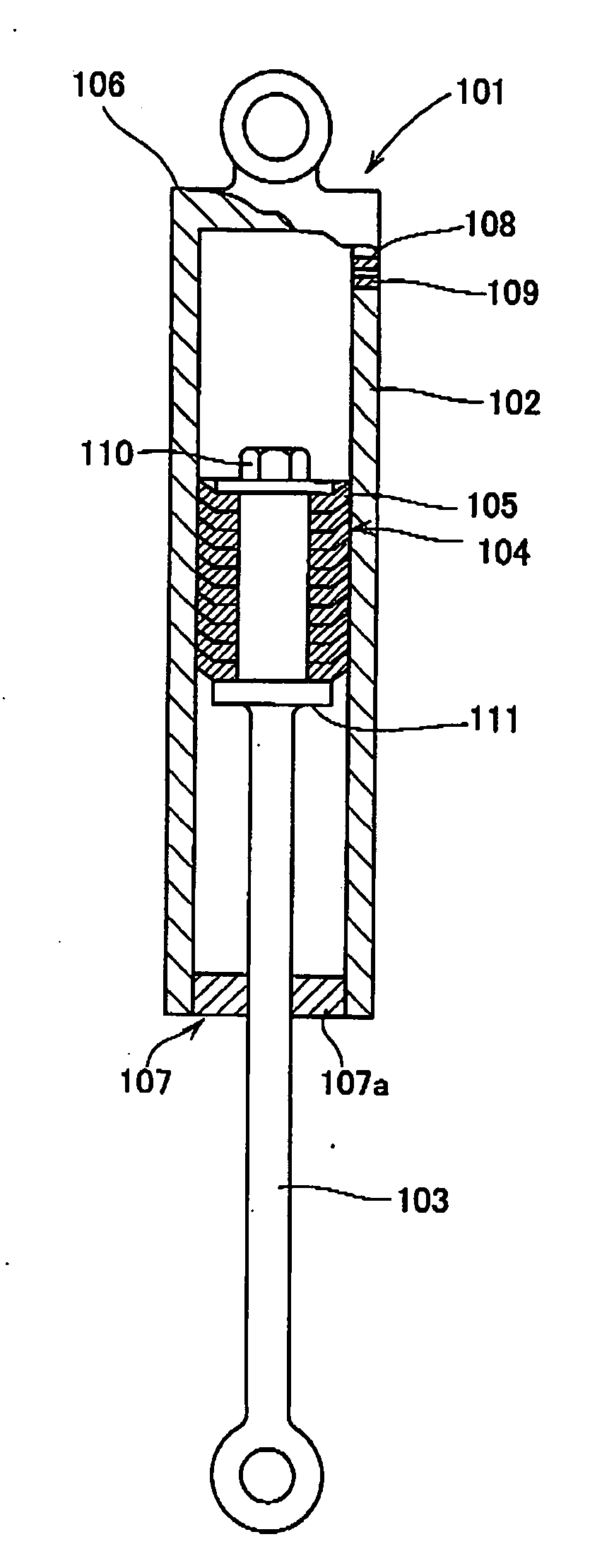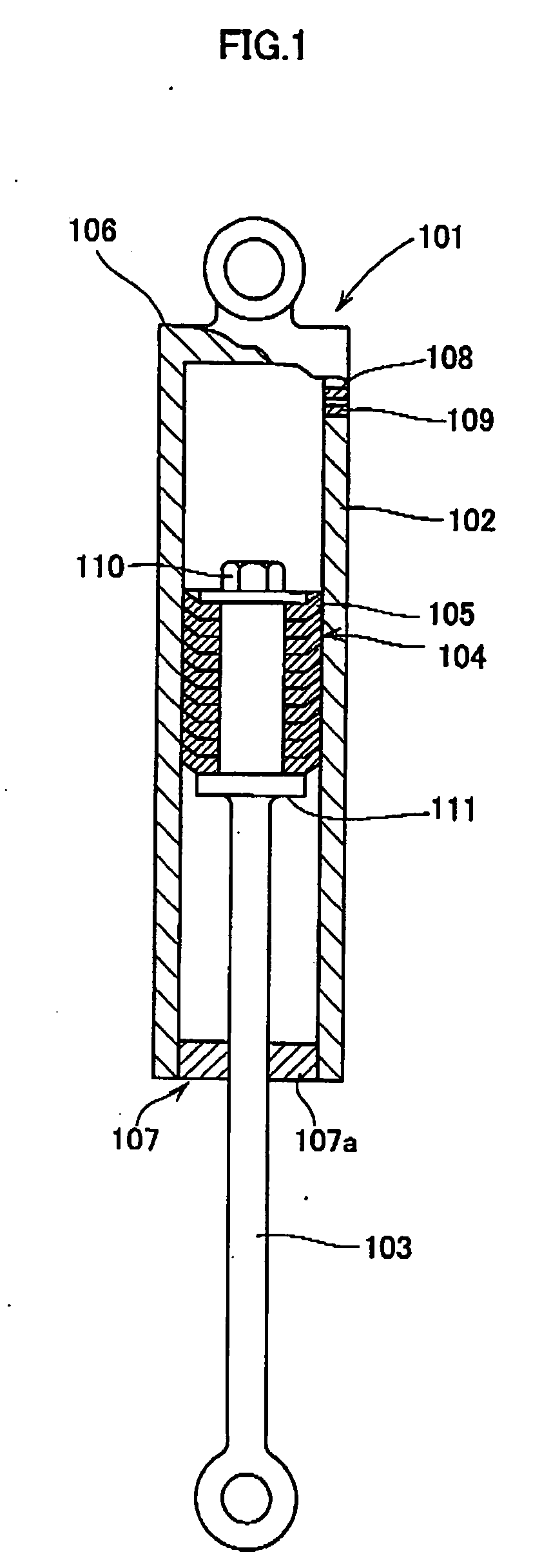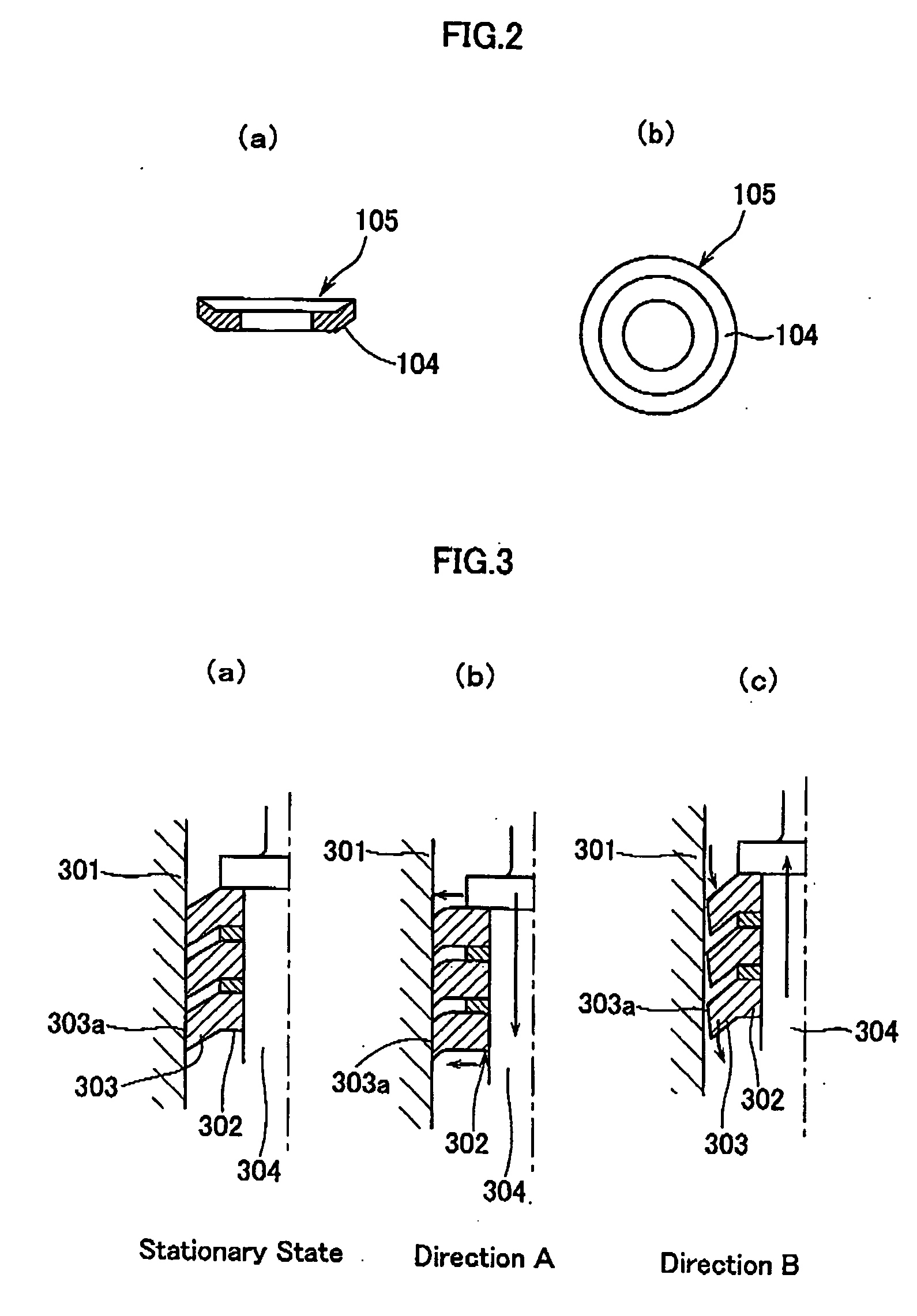Damping Device
a technology of damping device and damping ability, which is applied in the direction of friction dampers, etc., can solve the problems of increased production cost of difficulty in controlling the damping ability of this type, and complicated structure of the damping device of this type, so as to increase the press contact force, control the damping ability thereof, and easy adjustment of damping force or ability
- Summary
- Abstract
- Description
- Claims
- Application Information
AI Technical Summary
Benefits of technology
Problems solved by technology
Method used
Image
Examples
first embodiment
[0060] An example of the direct acting type damping device or damper according to the present invention will hereunder be described in more detail with reference to the drawings attached hereto.
[0061]FIG. 1 is a schematic cross sectional view showing the direct acting type damping device according to the present invention; FIG. 2 shows cross sectional views of the flange member used in this damping device; and FIG. 3 is a constitutional diagram for explaining the operations of the damping device.
[0062] As will be seen from FIG. 1, this damping device is a direct acting type damping device 101 which comprises a cylindrical housing 102, a piston rod 103 undergoing reciprocating motions within the housing and a flange member 104 as a disk-like damping or braking member. This flange member, in its free state, has an outer diameter slightly greater than the inner diameter of the housing to which it is fitted. Further the flange member is unidirectionally tapered, towards the periphery t...
second embodiment
[0086] Then, an example of the rotary acting type damping device according to the present invention will hereunder be described in more detail with reference to the drawings attached hereto.
[0087]FIG. 7 is a schematic perspective view for explaining a disk-like flange member for damping used in the rotary type damping device according to the present invention; FIGS. 8 and 9 are schematic truncated side views (FIGS. 8(a) and 9(a)) and cross sectional views each taken along the line A-A shown in FIG. 8(a) or 9(a) for schematically showing the structure of the rotary type damping device according to the present invention, respectively (FIGS. 8(b) and 9(b)); FIG. 10 is a transverse sectional view showing a variety of shapes of the flange member used in the rotary type damping device according to the present invention; and FIG. 11 is a schematic diagram showing a different variations concerning the convex portions of the flange member used in the rotary type damping device according to t...
PUM
 Login to View More
Login to View More Abstract
Description
Claims
Application Information
 Login to View More
Login to View More - R&D
- Intellectual Property
- Life Sciences
- Materials
- Tech Scout
- Unparalleled Data Quality
- Higher Quality Content
- 60% Fewer Hallucinations
Browse by: Latest US Patents, China's latest patents, Technical Efficacy Thesaurus, Application Domain, Technology Topic, Popular Technical Reports.
© 2025 PatSnap. All rights reserved.Legal|Privacy policy|Modern Slavery Act Transparency Statement|Sitemap|About US| Contact US: help@patsnap.com



